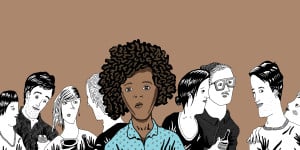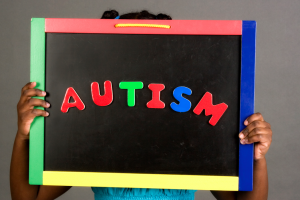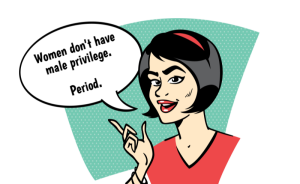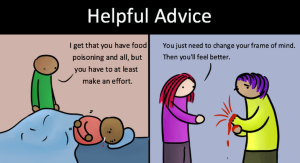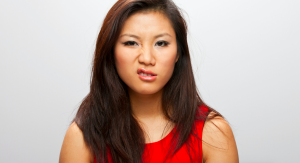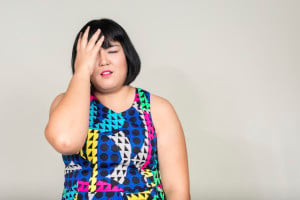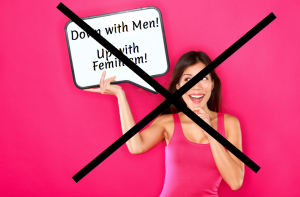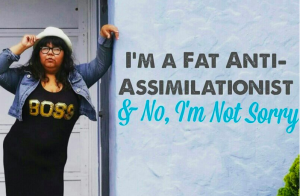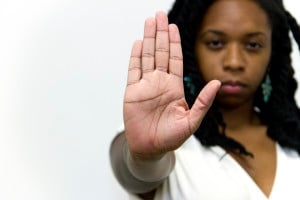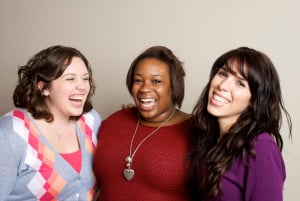
Source: iStock
Finding a queer community saved my life. I’m not exaggerating.
Throughout my life, I’ve been told that there is only one right way to experience love, romance and sexual attraction: that is, I was conditioned to believe certain heteronormative myths about relationships.
When I finally found a queer community that included space for someone like me, I felt relieved. Finally, I could live out my truth as a pansexual person while being supported and loved by a large, beautiful group of people I felt connected to and in alignment with.
Queer communities are incredibly important – they enable radical activism, function as a support network, and be safe, love-filled spaces.
But they can be oppressive too.
Of course, I know that queer people are sometimes exclusionary. In some queer spaces, I experienced monosexism, and witnessed a lot of transphobia and racism.
And after coming out as polyamorous, I encountered yet another source of exclusion in the queer spaces I used to navigate. While polyamorous people are by no means the only people who are excluded in queer communities, it’s imperative that we think critically about the subtle and overt ways in which we exclude non-monogamous people from our queer spaces.
Why It’s Important to Include Polyamorous People
The same logic that should prompt us to advocate for the liberation of queer people applies to the inclusion of polyamorous people, too.
If everyone should be free to conduct their relationships, romantic and sexual activities the way they want – as long as they don’t hurt others – this should include polyamory.
When we exclude polyamorous people from queer spaces, we’re making life even more difficult for people who are both queer and polyamorous.
Commonly, the exclusion of polyamorous people from certain queer communities is fueled by homonormativity.
In one of their articles, Kris Nelson defines heteronormativity as “a system that works to normalize behaviors and societal expectations that are tied to the presumption of heterosexuality and an adherence to a strict gender binary.”
Heteronormativity promotes certain kinds of sex, relationships and families as ‘normal’, ‘natural’ and ‘acceptable’. Namely, it privileges monogamy, heterosexuality, sex between married partners, and sex for reproductive purposes.
Polyamory, queerness, transactional sex, sex between multiple partners, premarital and extramarital sex, and sex for recreational purposes are deemed to be deviant by heteronormativity.
Homonormativity, on the other hand, is the assimilation of queer people (especially homosexual people) into a heteronormative system without challenging the core ideas of heteronormativity.
Homonormativity is heteronormativity repackaged and tied up with an elaborate rainbow ribbon. It looks attractive, but once we start to unpack it, we realise it’s the same toxic oppression we sought to remove in the first place.
The problem with homonormativity is that we’re conforming to an oppressive system. Because of this, we end up reproducing the harmful idea that certain kinds of relationship are better and more acceptable than others.
Queers often assimilate to heteronormative ideals because we want the same kind of privilege that is afforded to straight people. We want to send out the message that we’re just like straight people, except we’re queer. We try to make ourselves seem more ‘normal’, less ‘deviant’, and more ‘acceptable’.
But instead of aiming for assimilation into a system, we should be challenging the system itself.
Rather than trying to make ourselves look more ‘acceptable’ (in other words, conforming to the norm), we should be rejecting the norm in the first place.
Our queer spaces are ideal for the rejection and subversion of those norms. By offering compassionate acceptance to those who are non-monogamous, we can move towards dismantling the oppressive system that is imposed on us all.
Accepting non-monogamy as a valid relationship structure is important as it can help us unlearn the harmful messages most of us have been fed our entire lives.
Sometimes the ways we exclude polyamorous people are subtle and therefore unrecognised by most monogamous people. So, I’ve put together a list of ways in which polyamorous people are marginalized within queer movements.
Let’s take a look at some of the ways polyamorous people are excluded and marginalized by some queer communities.
1. We’re Ignored In The Push For ‘Marriage Equality’
The prioritization of so-called marriage equality in the mainstream ‘gay rights’ movement is problematic, to say the least.
The rights, protection and livelihood of some of the most vulnerable members of the queer community is being overshadowed by the push for marital rights.
And what exactly is marriage, anyway? In many ways, marriage is an oppressive institution.
It perpetuates the notion that some relationships are more important than others, and the idea that love has to be recognized by the state to be ‘official’ and real. The push for marriage also ignores the issues faced by people with disabilities who choose to get married.
As Janani Balasubramanian says in this excellent article, “Marriage equality may be a victory for gay rights, but it’s also a victory for the historically oppressive institution of marriage.”
Additionally, the very term ‘marriage equality’ ignores the fact that polyamorous marriages aren’t recognized by the state.
But it’s not only terminology that is oppressive and exclusionary. Some of the arguments we use to support ‘marriage equality’ excludes and oppresses polyamorous people.
Sometimes, people who oppose same-gender marriage ask, “If we allow two men to marry, for example, what’s to stop people from marrying multiple people at once?”
Commonly, the mainstream queer community responds to this by saying that it’s a slippery slope argument. This might be true, but we need to respond to this mentality by pointing out that multiple consenting people should also be allowed to get married.
Sometimes, people want to marry multiple partners. They shouldn’t be thrown under the bus for the benefit of monogamous queer people.
In order to make our queer communities more inclusive of polyamorous people, we need to interrogate the idea of ‘marriage equality’.
Marriage equality isn’t truly equality unless it includes polyamorous people – and even then, we need to think critically about how the push for marriage equality can exclude various people.
2. We’re Harmed By The Promotion of Normative Family Structures
Something I’ve encountered in my community is the use of homonormative ideas to defend same-gender adoption.
When it comes to same-gender adoption, some people argue that children deserve two-parent homes as opposed to growing up without parents The advertisements, memes and protest posts promoting same-gender adoption usually show two parents and one or two children.
They point to families like that of Neil Patrick Harris to show that queer people can be ‘just like you’: they can have families that look very much like ideal heterosexual families, except, of course, the parents are of the same gender.
The problem with this line of thinking is that it promotes homonormative family structures.
Instead of challenging the idea that certain family structures are healthier than others, it replicates the family structure that is prescribed by heteronormativity.
This marginalizes polyamorous people, who often have families – including children – that are extensive and non-heteronormative.
Of course, these ideas also serves to oppress single parents and people from cultures that don’t subscribe to Western, heteronormative ideas of family structures.
All families are structured differently. What matters is not the quantity of family members, but the quality of the relationships between those families.
I grew up in a home with an interesting familial structure. My mother was a single parent and I was raised mostly by her and my grandparents. My older siblings, aunts and uncles. cousins and other extended family members were very involved in my upbringing.
The idea of a nuclear family was far-removed from my reality, yet I had a beautiful, close-knit support structure. My family didn’t conform to the societal norm, but I had a well-rounded and happy home life.
When we talk about same-gender adoption and families with queer parents, it’s imperative that we remember to include polyamorous people.
We should avoid promoting the idea that certain family structures are better than others altogether – otherwise we’re simply repackaging heteronormativity.
3. We’re Harmed By Sex-Shaming Sentiments
For decades, the queer community has been represented as sexually deviant and therefore promiscuous.
The LGBTQ+ community often tries to present itself as less ‘sexually deviant’ in order to be accepted. The problem with this is that we end up promoting heteronormative ideas about sex and throwing some of the most marginalized people under the bus.
When I was in high school, an older friend came out as bisexual on Facebook. Someone asked if they need to be dating both a woman and a man to be happy – an irritating, problematic and all-too-common question.
Their response was, “No! I’m not a slut. I can only date one person at once.”
There are levels to this response. Firstly, they were sex-shaming – which is wrong in itself. Secondly, they were implying that polyamorous people were ‘sluts’ and therefore bad people.
This cringe-worthy sentiment is incredibly common in queer communities.
Polysexual people – including those who identify as bisexual, pansexual, omnisexual, and so on – are especially stereotyped as being ‘promiscuous’, unfaithful or having more than one partner at once.
Of course, these stereotypes are just that – stereotypes.
But we shouldn’t respond to stereotypes with oppressive ideas. Not all polysexual people have multiple partners, but having multiple partners isn’t inherently a bad thing.
While not all polyamorous relationships are sexual in nature, the rejection of polyamory is closely tied to sex shaming and the heteronormative myth that we should only have one sexual partner at a time.
***
Queer communities can be sites for radical change, acceptance, love and healing. But when these communities reproduce oppressive ideas, they perpetuate the status quo instead of challenging it.
For this reason, it’s important that queer communities make an effort to include all groups, including polyamorous people. By being introspective about our movement, we can ensure its growth and strength.
After all, we can’t advocate for equality, liberation and open-mindedness without practicing it.
[do_widget id=’text-101′]
Sian Ferguson is a Contributing Writer at Everyday Feminism and a queer, polyamorous, South African feminist who is currently studying towards a Bachelor of Arts majoring in English and Anthropology. Originally from Cape Town, she now studies at Rhodes University in Grahamstown, where she works as vice-chair of the Gender Action Project. She has been featured as a guest writer on websites such as Women24 and Foxy Box, while also writing for her personal blog. Follow her on Twitter @sianfergs. Read her articles here.
Search our 3000+ articles!
Read our articles about:
Our online racial justice training
Used by hundreds of universities, non-profits, and businesses.
Click to learn more









